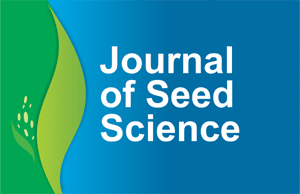Abstract:
Calophyllum brasiliense Cambess. (guanandi) is a native species with medicinal potential and also generates expectation for commercial use (wood) and for recovery of degraded areas. These seeds have physical and mechanical dormancy, requiring techniques for dormancy release; knowledge of seed and seedling morphology that assists laboratory analysis and propagation of the species is also necessary. The objective of this study was to describe the morphological structures of the seeds and normal and abnormal seedlings of guanandi, and also investigate if complete extraction of the endocarp and the seed coat to overcome dormancy will affect the morphology and initial plant development, and consequently production of transplants. Guanandi seeds are large (1000 seed weight of 1480.9 g) with a hard seed coat; cotyledons account for most of the embryo and serve as a reserve; the embryonic axis is small (1.0-2.0 mm) in relation to the seed, yet it is differentiated. The seedlings have hypogeal cryptocotylar germination, with cotyledonary petioles, taproot, and epicotyl developing into a long stem and a tip protected by cataphylls. The main abnormalities in seedlings are related to the root system. Extraction of the endocarp and seed coat does not alter the morphology of seedlings and promotes their greater development, which may be an advantageous strategy.
Index terms:
guanandi; morphology; seedlings; seeds

 Thumbnail
Thumbnail
 Thumbnail
Thumbnail
 Thumbnail
Thumbnail
 Thumbnail
Thumbnail
 Thumbnail
Thumbnail
 Thumbnail
Thumbnail





